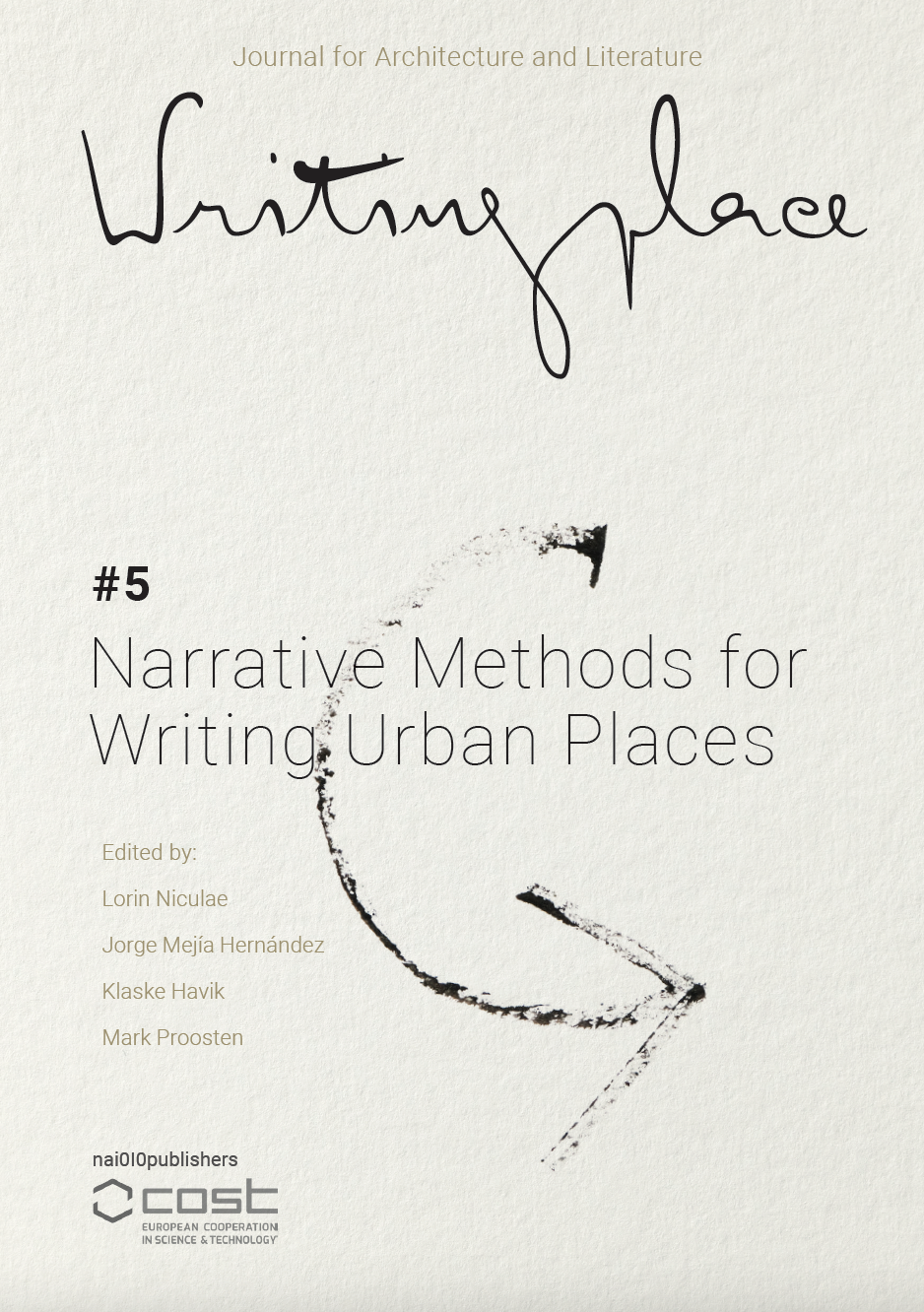Narrative Methods for Writing Urban Places
EDITORIAL
DOI:
https://doi.org/10.7480/writingplace.5.5865Abstract
This fifth issue of the Writingplace Journal examines different narrative methods, understood as procedures, techniques or ways of relating or recounting events, and how they can be used to appraise and imagine the city. The editorial process of the issue has been developed within the context of the EU-funded COST Action ‘Writing Urban Places’,1 a multidisciplinary network of researchers who are interested in developing new narratives for the European city. By recognizing the value of urban narratives – stories rich in information regarding citizens’ sociospatial practices, perceptions, hopes and ambitions – the network seeks to foster and preserve the democratic, and therefore inclusive, nature of the modern European city.
References
writingurbanplaces.eu/.
writingurbanplaces.eu/about/team/wg-3-methodological-framework/.
https://writingurbanplaces.eu/library/links/.
These three topics – meaningfulness, appropriation and integration – as goals for the built environment, will be developed in the upcoming 6th issue of the Writingplace Journal, which will be published in the autumn of 2021.
Downloads
Published
How to Cite
Issue
Section
License
Copyright (c) 2021 Klaske Havik, Lorin Niculae, Jorge Meija Hernandez, Mark Proosten

This work is licensed under a Creative Commons Attribution 4.0 International License.



